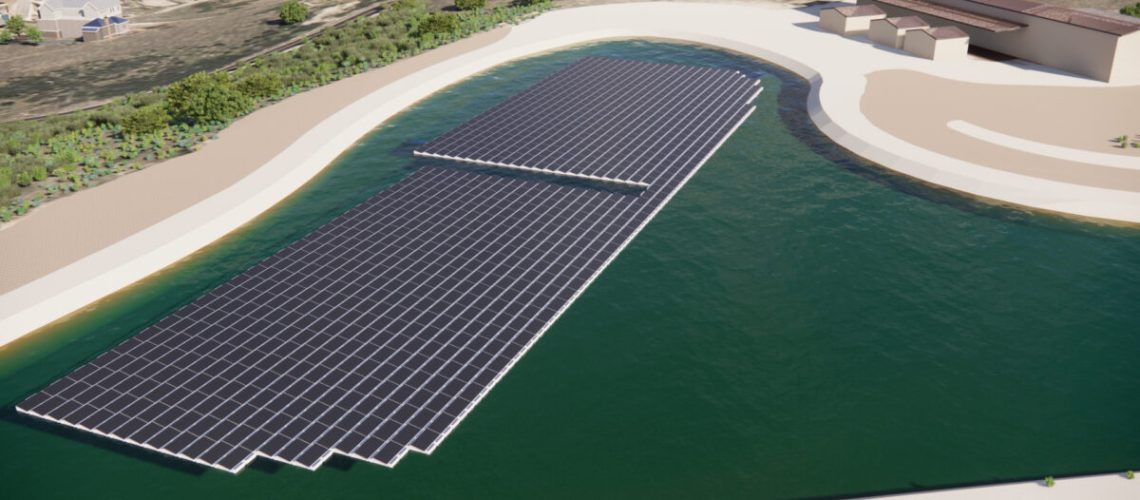Ameresco was selected to design and install a floating solar array for Mountain Regional Water.
One of the most advantageous features of solar is its ability to be built in a variety of configurations and locations, from large plots of land to rooftops, parking canopies, mobile devices, and even floating on the surface of a body of water.
In Utah, Mountain Regional Water, a water treatment plant, has taken advantage of this flexibility of design, tapping Ameresco to design and install a 589.7 kWDC floating solar array on its Signal Hill facility.
The project is expected to offset 92% of the energy consumed from the grid and reduce the district’s energy costs by 80%. The new floating solar array system is designed to produce 887,712 kilowatt-hours of solar energy annually.
“Traditional ground or rooftop solar wasn’t an option for us at this facility, but this innovative floating solar installation makes use of an untapped resource,” said Chris Braun, Mountain Regional chief technology officer. “This is one more piece of the puzzle for us get to a ‘Net-Zero’ energy goal as we strive to be responsible stewards for the community and the environment.”
The array will be owned by the district and will float upon the treatment plant’s holding pond to provide electricity to power the plant. Once operational, the floating solar array system is designed to reduce carbon dioxide emissions by 384 metric tons annually, which is equivalent to saving 43,211 gallons of gasoline per year or preventing the burning of 430,160 pounds of coal.
Construction is planned for June 2024, with the project reaching commercial operations in September 2024.
Mountain Regional Water’s district received a $400,000 grant from utility Rocky Mountain Power’s Blue Sky program to support the project. Blue Sky is an opt-in program that gives Rocky Mountain Power customers the option to match all or part of their energy use with renewable energy, reducing their carbon footprints and driving demand for new renewable energy in the West. Since 2006, Blue Sky’s 56,000 participants have helped fund over 200 new, community-based renewable energy projects in Utah, Idaho and Wyoming.
“We are thrilled to demonstrate how providing the right mix of solutions can help our customers meet their decarbonization and energy savings goals in an economically viable manner,” said Bob Georgeoff, executive vice president, Ameresco.
Floating PV is expected to establish a sizeable new global market by 2026, said Global Industry Analysts (GIA), which has projected a 4.8 GW deployment by that year. Generally, 1 MW of FPV plant covers water bodies of about 17 acres to 25 acres and can generate electricity of 1500 MWh, said GIA.
(Read: “Floating PV plant operators may achieve additional revenue through non-evaporated water”)
The market is currently sized at about 1.6 GW globally, and GIA predicts it will move at a compounded annual growth rate (CAGR) of 33.7% by 2026, reaching 4.8 GW. The Asia-Pacific region is expected to be the largest market share at around 60%, with China the fastest growing market with a CAGR of 59.4%. Floating PV’s cost is much higher than that of stationary solar panels, the key hinderance in its growth, said GIA.
GIA said the U.S. has over 24,000 human-made water bodies that are anticipated to be suitable for floating PV development.



